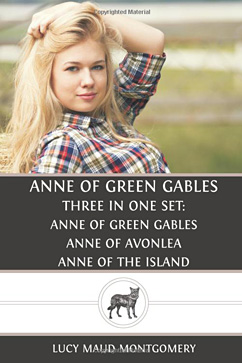“They were on the crest of a hill. The sun had set some time since, but the
landscape was still clear in the mellow afterlight. To the west a dark church spire rose up
against a marigold sky. Below was a
little valley and beyond a long, gently rising slope with snug farmsteads
scattered along it. From one to another
the child’s eyes darted, eager and wistful. At last they lingered on one away to the left, far back from the road,
dimly white with blossoming trees in the twilight of the surrounding
woods. Over it, in the stainless
southwest sky, a great crystal-white star was shining like a lamp of guidance
and promise.”
~ Anne of Green Gables by L.M. Montgomery, Chapter
2: Matthew Cuthbert is Surprised
Anne of Green Gables is the first in a series of nearly a dozen novels and short story
collections which first made Lucy Maud Montgomery famous and later drove her
crazy. Like Arthur Conan Doyle with his
creation of Sherlock Holmes, the Anne Shirley character was so beloved by her
audience that she soon took on a life of her own, and Montgomery was stuck
writing stories for her ad nauseam. It’s
pretty clear from Montgomery’s tone in the later books that the creator was
sick of her creation, and though she didn’t throw Anne Shirley off the
Reichenbach falls, one can’t help suspecting Montgomery was sorely
tempted.











